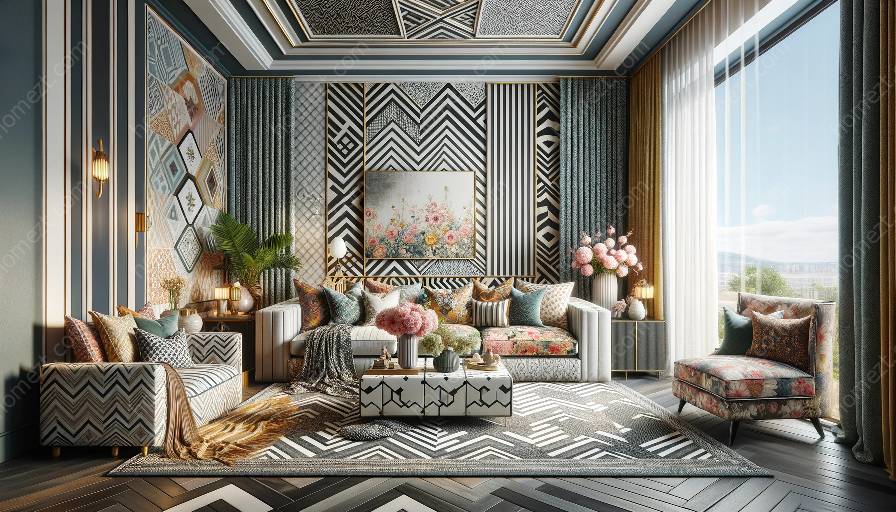Pattern mixing is an art that involves combining different patterns to create an aesthetically appealing and harmonious look in interior decorating. When done right, it can infuse life and personality into a space, making it visually dynamic and engaging. However, mixing patterns can be daunting for many, as it requires careful consideration of several key principles to ensure a cohesive and balanced result.
Understanding the Key Principles for Mixing Patterns
To successfully mix patterns in decorating, it's essential to keep the following principles in mind:
1. Scale and Size
Consider the scale and size of the patterns you plan to use. It's important to mix patterns of varying scales to create contrast and visual interest. For example, pairing a large-scale floral print with a small-scale geometric pattern can add depth to the overall design.
2. Color Coordination
Coordinate the colors within the patterns to ensure they complement each other. Look for a common color that appears in multiple patterns to create a cohesive palette. Alternatively, selecting patterns with analogous or complementary colors can also work harmoniously together.
3. Balance and Proportion
Achieving balance and proportion is crucial when mixing patterns. Distribute the patterns evenly throughout the space to maintain visual equilibrium. Introducing solid colors or neutrals can help balance out the busyness of the patterns and prevent the look from becoming overwhelming.
4. Texture and Material
Explore different textures and materials when mixing patterns. Combining varying textures, such as smooth fabrics with rough textures or glossy surfaces with matte finishes, can add depth and dimension to the overall design.
5. Theme and Style
Consider the overall theme and style of the space when mixing patterns. Whether it's a contemporary, eclectic, or traditional decor, ensure that the patterns align with the overarching design concept. Mixing patterns should enhance the desired aesthetic rather than detract from it.
Practical Applications of Pattern Mixing
Now that you understand the key principles of mixing patterns, it's time to explore how to apply them in real decorating scenarios:
1. Layering Patterns in Upholstery and Drapery
Experiment with layering patterns in upholstery and drapery. For example, a striped sofa paired with floral accent chairs and patterned curtains can create a sophisticated yet lively look, as long as the colors and scales are harmoniously coordinated.
2. Mixing Patterns in Bedding and Pillows
In bedrooms, mixing patterns in bedding and pillows can add personality to the space. Combine a geometric duvet cover with floral shams and textured accent pillows to achieve a well-balanced and visually appealing bed ensemble.
3. Patterned Wallpapers and Art
Introduce patterned wallpapers and art to add visual interest to walls. Consider mixing geometric wallpapers with botanical art prints to create a captivating and dynamic wall composition that reflects the principles of pattern mixing.
4. Rug and Floor Pattern Combinations
When selecting rugs and floor patterns, aim to mix different patterns to enliven the space. A striped rug paired with a graphic patterned floor tile can infuse energy and personality into an otherwise neutral room.
Conclusion
Mastering the art of pattern mixing in decorating requires an understanding of the key principles and their application in real-life scenarios. By considering scale, color coordination, balance, texture, and theme, one can confidently mix patterns to create visually captivating and harmonious interiors that reflect personal style and creativity.






































